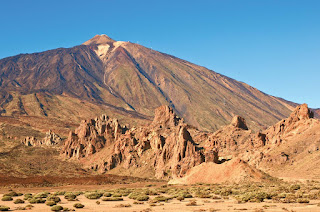The last time we went beyond the shores of the UK was in 2019 when we enjoyed the Rugby World Cup in Japan and our brief few days in Beijing. Little did we know that the dreaded Covid 19 was to follow us back to Europe, or maybe it proceeded us, on it's way to virtually close the world down as we knew it. 2020 and 2021 have been and gone in a glaze of confusion surrounding lockdowns, shortages, kindnesses and generosity, a house move and refurbishment, tragedies and sadness. The time proved equally divisive and bonding. All the while our Government demonstrated incompetence, nepotism, hypocrisy, arrogance and pants ablaze dishonesty, the results of which have still not yet come home to roost.
At least we have all been made more fully aware of the Greek alphabet and we understand that the Omicron variant is much less life threatening, especially to the wisely vaccinated, than was previously predicted. So Helen and I feel it is time to spread our Ryanair wings and head out to the Canary Islands for the first time. More specifically we are heading for Gran Canaria, whose flag you can see below.
There are elements of the historic Spanish flag present in this local version. Each of the seven islands of the Canary archipelago have their own flag. Tenerife for example have a diagonal white cross on a dark blue background. There is no truth in the rumour that this is to make Scottish visitors feel at home!
The islands have a deserved reputation for hibernating a number of Northern European pensioners, so appropriately we shall be joining them but only for two weeks in our case. Let's have a look at a map of our destination.
As you can see the island is a classic semi-submerged cone shaped volcano. Our accommodation is on the east side of the island, on the coast close to Telde the one-time capital of the island. Expand the map and look for Playa del Hombre. This is the beach very close to our villa. We are one of four units on our development which surround a heated swimming pool and sun terrace, but you can see more after we arrive if you read the successive blogs. A bit of historical and geographical context for you next.
The islands exist because of volcanic activity over many millenia. Laying only 100 kms off the coast of North Africa, but over 1000 kms away from Spain, they were thought to be a continuation of the Atlas chain. However they are now considered to be the product of their own volcanic hot-spot. They age from west to east with Lanzaroti being the oldest where the activity started about 70 million years ago. The volcano on the island of La Palma was, of course active only last year.
Let's get the name business over right away. They are not called after the birds. The birds are named after them. Pliny the Elder, writing in the first century CE, claimed that the islands were home to large numbers of big dogs. This evidence is possibly based on the erroneous observations of large Monk Seals. Certainly the earliest settlers who became the indigenous people were called "Canarii". They arrived as early as 1000 BCE. Take your pick.
Politically the islands are now a Spanish autonomous region. Spain along with Portugal and France contested ownership. Spain was given the territory by treaty in the C15 about the time Columbus was going west. I understand that, as usual, the Canarii were not consulted. The population numbers just over 2 million with about 80% split equally between Gran Canaria and Tenerife. The islands welcome more than 12 million visitors per year. A stellar attraction on Tenerife is Mt. Teide, World Heritage site, Spain's highest peak and the world's third highest volcano (when measured from its base on the seabed).
Not my pictures, as we haven't yet visited and we are going to Gran Canaria, which is apparently best for outstanding scenery and breathtaking beaches. So looks like all we'll need are hiking boots and swimmers.


